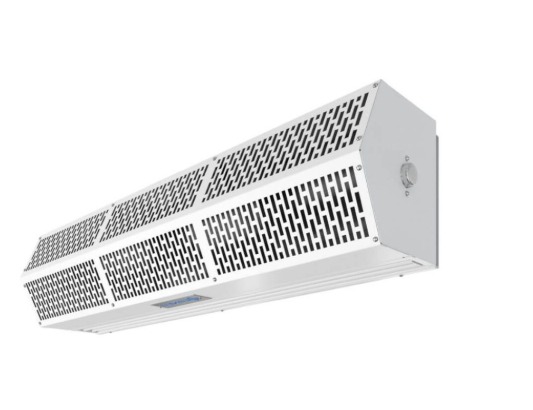In a restaurant, maintaining a clean, comfortable, and welcoming environment is critical for both customer satisfaction and operational efficiency. With constant foot traffic and open doors, restaurants often face challenges such as fluctuating indoor temperatures, pest intrusion, and the entry of dust, odors, and pollutants. An air curtain serves as an effective solution, acting as an invisible barrier that separates indoor and outdoor environments without obstructing access. By addressing these challenges, air curtains not only enhance the dining experience but also contribute to energy efficiency and hygiene compliance.
Here are the key benefits of having an air curtain in a restaurant-
1. Comfort and Energy Efficiency
- Temperature Stability: Air curtains create a barrier that prevents the exchange of indoor and outdoor air. This ensures the interior stays comfortably cool in summer and warm in winter, enhancing the dining experience.
- Reduced Energy Costs: By minimizing HVAC energy loss, they lower heating and cooling costs, leading to significant savings over time.
2. Hygiene and Sanitation
- Pest Control: Air curtains block insects, rodents, and other pests from entering the restaurant, helping to maintain a hygienic environment.
- Dust and Debris Prevention: They prevent outdoor dust, dirt, and other airborne particles from entering, keeping the restaurant cleaner and safer for food preparation and service.
3. Enhanced Air Quality
- Odor Management: External odors, such as traffic fumes or nearby trash smells, are kept out, ensuring a pleasant atmosphere for diners.
- Pollution Control: Filters out pollutants and allergens from entering through open doors, contributing to healthier indoor air.
4. Improved Customer Experience
- Welcoming Entrance: Restaurants can keep doors open to appear more inviting to potential customers without compromising comfort or cleanliness.
- Noise Reduction: While maintaining separation from outdoor noise, air curtains help create a peaceful dining environment.
Read similar: The Essential Guide to Choosing Air Curtains for Food Manufacturing Facilities
5. Regulatory Compliance
- Many health and safety regulations recommend or require measures to prevent pest intrusion and maintain air quality, and air curtains often help meet these standards.
6. Operational Benefits
- Separation of Zones: In restaurants with open kitchens or food preparation areas, air curtains can help separate these spaces from dining areas, minimizing the spread of heat, smoke, and odors.
- Cold Storage Efficiency: Air curtains installed at walk-in refrigerators and freezers help maintain proper temperatures, reducing energy costs and protecting food quality.
7. Aesthetic and Functional Appeal
- Modern air curtain designs are sleek and can complement the restaurant’s décor, while their functionality reduces the need for physical barriers like doors, which may feel less inviting.
Key Applications in a Restaurant
- Main Entrance: Prevents external air, pests, and pollutants from entering.
- Patio or Outdoor Dining Areas: Maintains separation between outdoor and indoor zones.
- Kitchen or Storage Areas: Helps control temperature, odors, and contamination risks.
Air curtains are a valuable addition to any restaurant, providing a seamless solution to maintain comfort, cleanliness, and energy efficiency. By preventing temperature loss, pest intrusion, and airborne contaminants, they help create a more pleasant dining environment while reducing operational costs. Additionally, air curtains contribute to regulatory compliance and enhance the overall customer experience. Investing in an air curtain is not just a practical choice but a commitment to quality and sustainability in restaurant operations.

